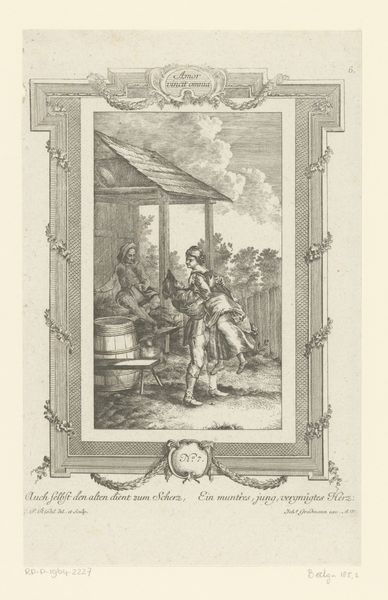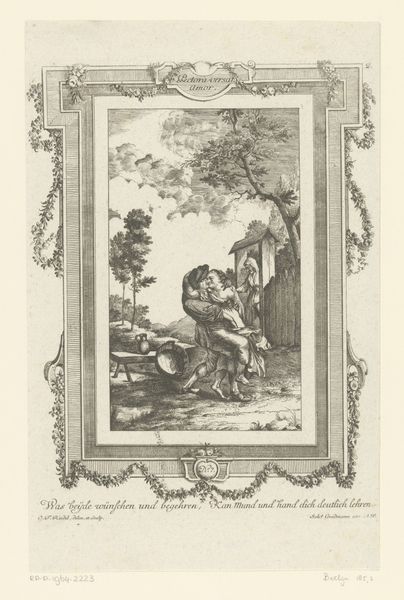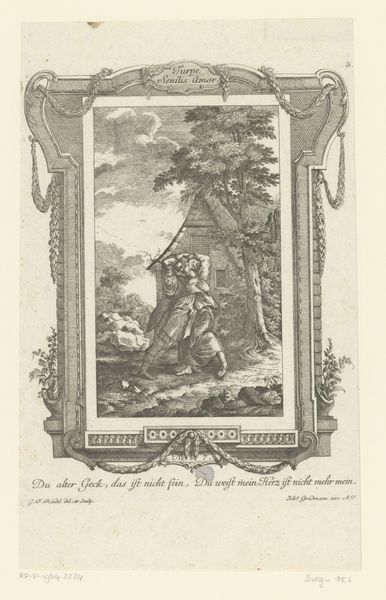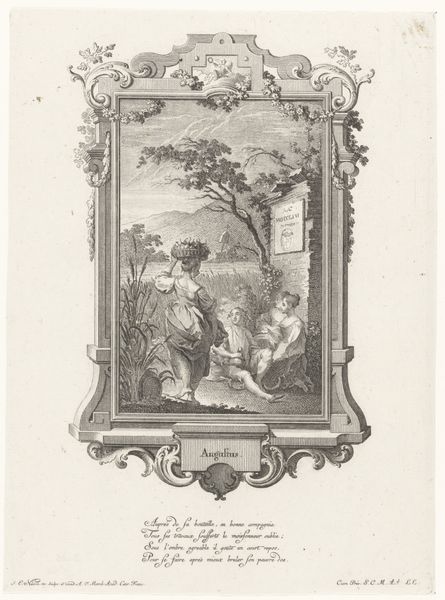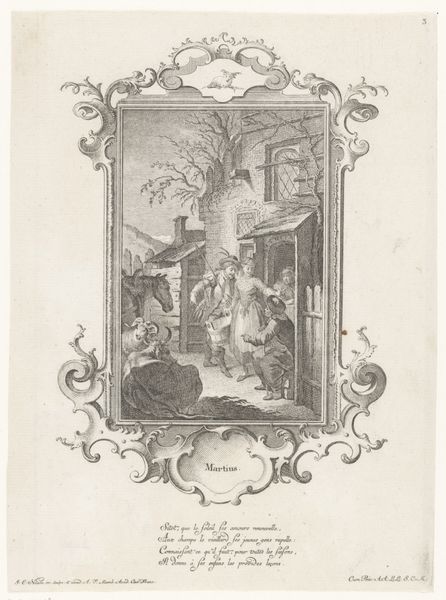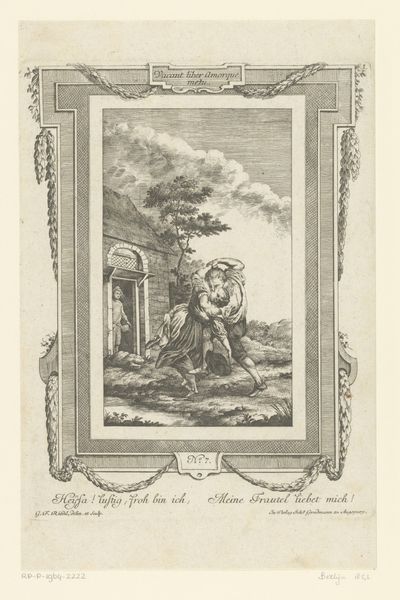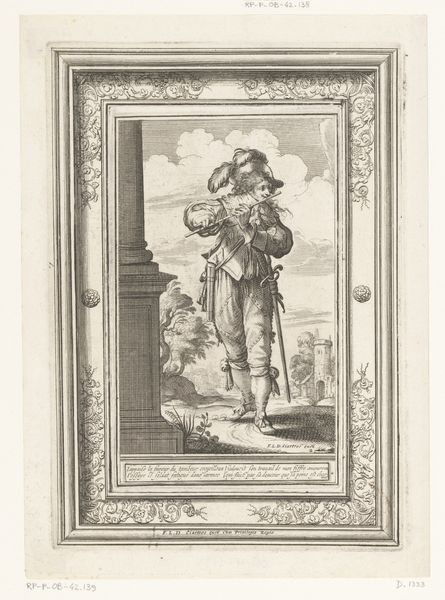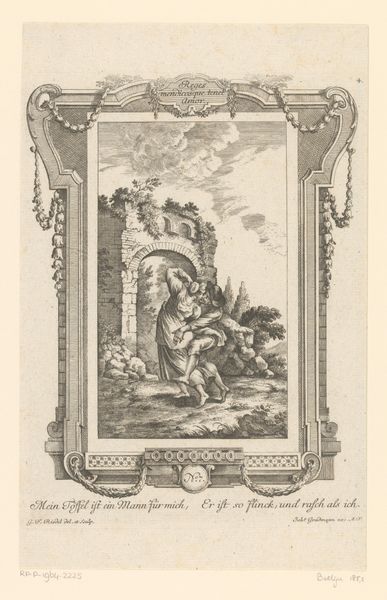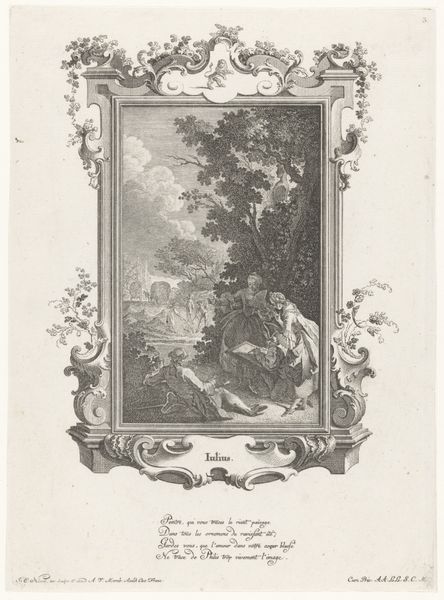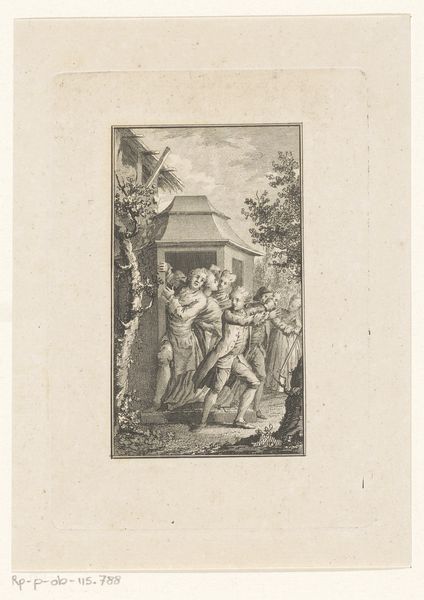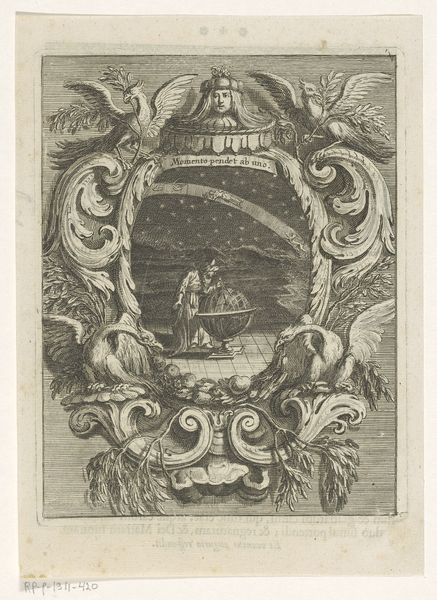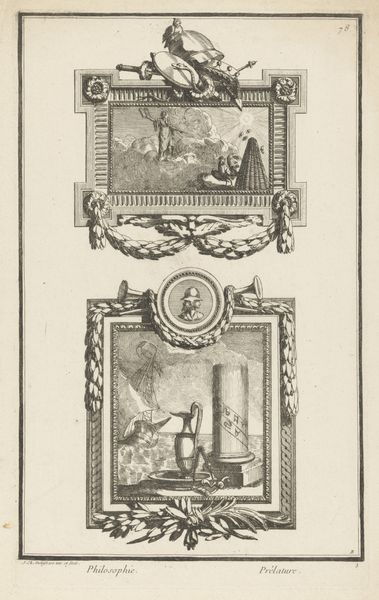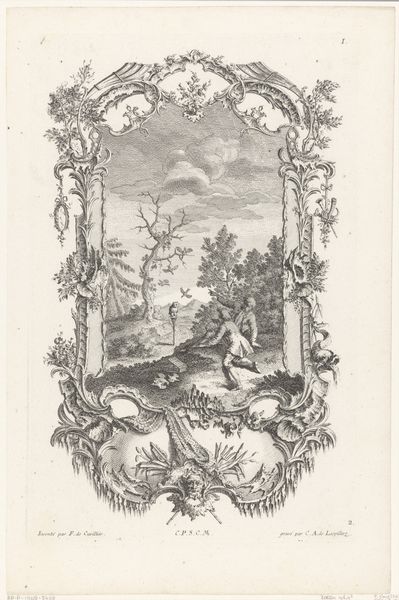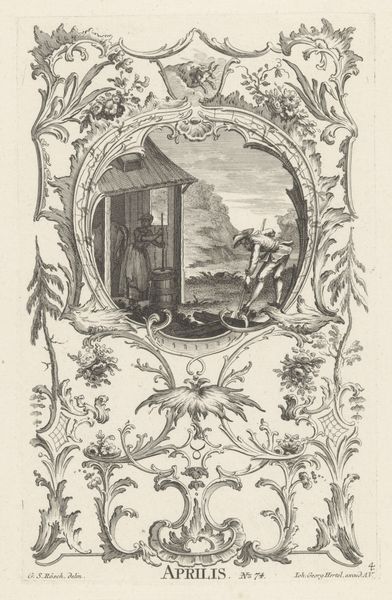
Dimensions: height 231 mm, width 171 mm
Copyright: Rijks Museum: Open Domain
Curator: This engraving, currently held in the Rijksmuseum collection, is entitled "Verliefd stel kussend," which translates to "Loving couple kissing." It was created by Gottlieb Friedrich Riedel sometime between 1778 and 1779. Editor: The composition immediately strikes me. The figures are so animated, almost tumbling. And the fine, precise lines of the engraving give the scene a delicate, almost ephemeral quality, even with all that robust movement. Curator: Indeed. It fits neatly into the late Baroque aesthetic, where ornamentation and movement served as visual hallmarks. It’s fascinating how this print bridges genre painting with a touch of historical narrative, reflecting societal values on love, or perhaps just hinting at rustic merriment. Editor: Right. Considering the material, the engraving technique allowed for wider distribution, making images like this accessible beyond the elite. I’m also drawn to how Riedel depicted labor—there’s that sense of everyday life in a rural setting, almost a casual snapshot despite the deliberate artifice. The figures appear to be mid-dance. The process is visible, like in their bodies thrown with so much motion. Curator: And that location plays into it! Notice how the context provided by that rudimentary structure of a stable, the flora surrounding, suggests themes related to simpler forms of leisure—themes promoted at this time but possibly quite separate from the life of the labourer in reality. Editor: Precisely. The drinking dog there shows what materials can reveal about human vice! It challenges any idealized reading. And this tension, this grounding in the real through tangible details like that overflowing trough, lends the scene a wonderful complexity. Curator: Absolutely. I think Riedel’s engraving provides valuable insight into the era’s complex dialogue surrounding love, class, and the representation of ordinary lives within a burgeoning print culture. Editor: I concur, exploring not just how art comments on history, but also how materiality and social circumstances mold artistic production itself.
Comments
No comments
Be the first to comment and join the conversation on the ultimate creative platform.
